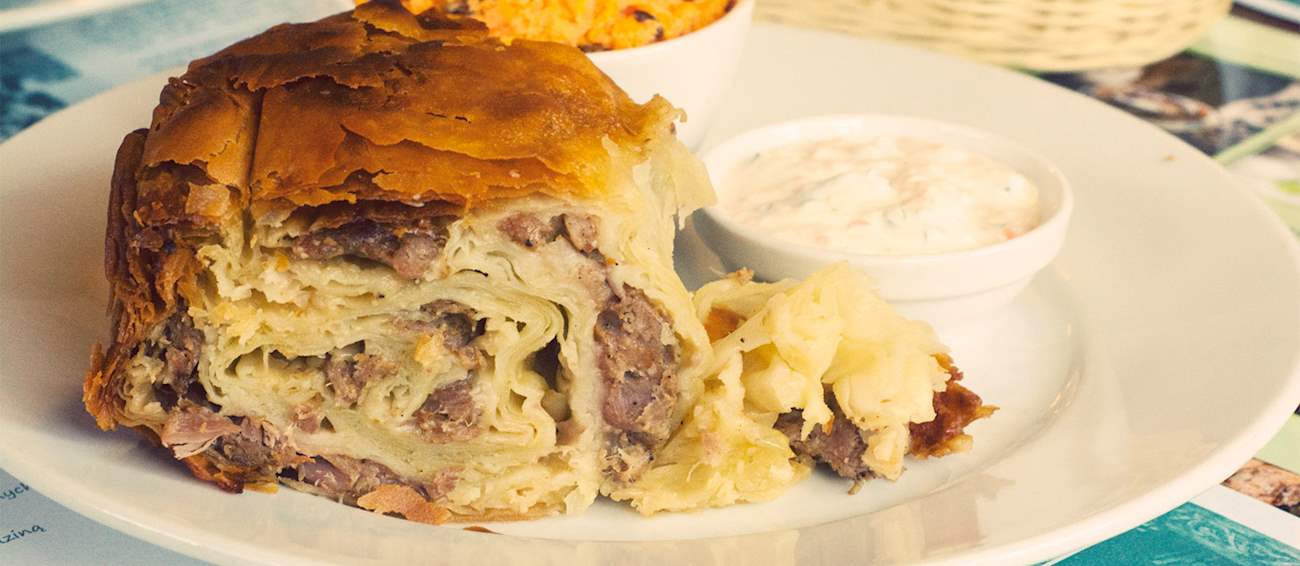OR
Already have an account? Log in
OR
(Tatarski pieróg)
The iconic Polish pierekaczewnik originated in the old eastern borderlands of Poland, a melting pot of many different peoples: Poles, Lithuanians, Russians, Belarussians, Ukrainians, Jews, and Tatars. The dish was brought to Poland by Tatar settlers who arrived as early as the 14th century, bringing with them their rich oriental cuisine.
Pierekaczewnik—or Tatarski pieróg, in its other name—is made with six layers of thinly rolled dough, each brushed with melted butter and spread with a savory filling of ground lamb, rolled into a snail shape, then baked until the crust crisps.
The dish is regarded as a delicacy across the country, especially in the Podlaskie region, but because of the lengthy preparation time, pierekaczewnik is seldom made, except in Tatar households where it represents a staple of Bayram celebrations.

